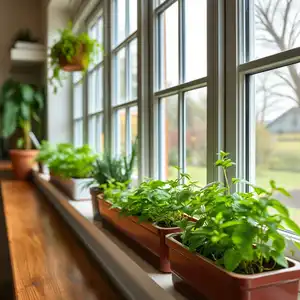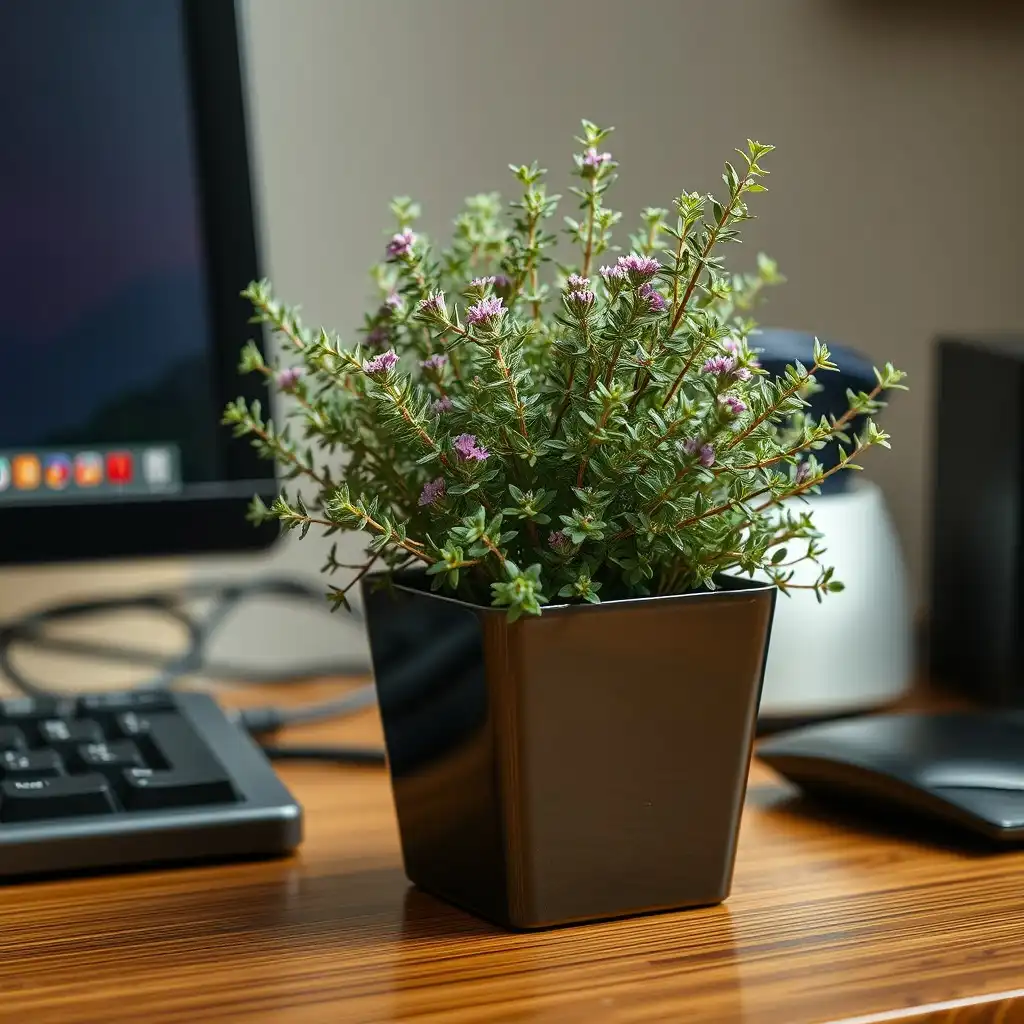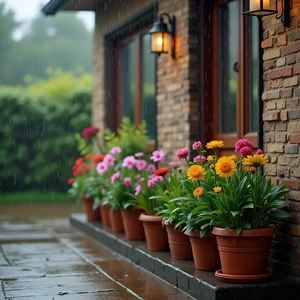
Herbs now become a stylish part of the interior. A living decoration with a delightful fragrance.
Rosemary in the kitchen, Mint in the living room, Thyme by the desk – mini-gardens add cosiness, fill the house with scents, and are always within reach.
In the actual article we’ll explore how to create a home herb garden. We’ll discuss which herbs are best to grow, which ones to avoid (and why), and, of course, we’ll also cover what to grow them in.
Where and How to Start?
To bring the idea to life, you’ll need a small to medium legged planter with good drainage. And if the pot doesn’t have holes, add a small layer of expanded clay at the bottom – just to prevent waterlogging. Next, fill it with soil (ideally a mix designed especially for herbs) and gently firm it down with your hands – this keeps it from settling too much after watering.
What Works Well for Planting?
Plenty of things, such as:
- Rosemary is a perennial and low-maintenance. Water only when the soil is completely dry, give it a trim now and then, and it’ll go for years.
- Basil grows best when planted in batches every few days – while one plant is still growing, another will be ready to use.
- Thyme grows slowly, staying compact and fragrant. A ready-made seedling is the easiest way to start here.
- Mint needs a bit more attention – without frequent watering and pruning, it might quickly become unruly.
- Ornamental peppers are a vibrant choice, especially varieties with multicoloured fruits – they’re as pretty as they are practical in cooking.
And What’s Not that Ideal to Plant?
That will be Lettuce. It takes nearly two months to grow, only to be eaten in one go. However, it’s a bit of a let-down – not a complete no-go. But hardly worth the effort.
Why is it worth it?
Growing your own herbs at home is easier than one might think: most plants are low-maintenance, and the benefits are clear: herbs grown this way retain far more vitamins than shop-bought ones.
Plus, they help purify the air and add a lovely touch of cosiness.

Fitting in With the Interior Design
Let’s talk about style, too.
A home garden should complement your interior and keep the plants happy.
A simple way to do this is to match the colour of your pots or tubs to the room’s scheme. Choose neutral tones that blend in or bold shades that stand out. You can also add charm with seasonal touches, like warm autumn colours or fresh spring greens.
Shelves and racks are important too: paint them in bright colours or choose ready-made pieces that match the entire style. Decorating your planters also helps to make everything match – try using some textile covers.
And for an eco-friendly or country style, use wooden crates and rough clay.
Finally, even small details can make a big difference. For instance, you may add some stylish labels or decorative toppers to give it that very personal touch.
A Few Last Tips on Caring for your Home Garden
The trickiest part of growing plants indoors is getting the watering right. The ideal routine of watering is roughly twice a week, yet it’s important not to overdo it: the soil should stay lightly moist, with a chance to dry out slightly between waterings – otherwise, the roots may start to rot. Moreover, timely fertilising is just as crucial: different plants have different needs – for instance, Peppers benefit from feeding every two to three weeks.







